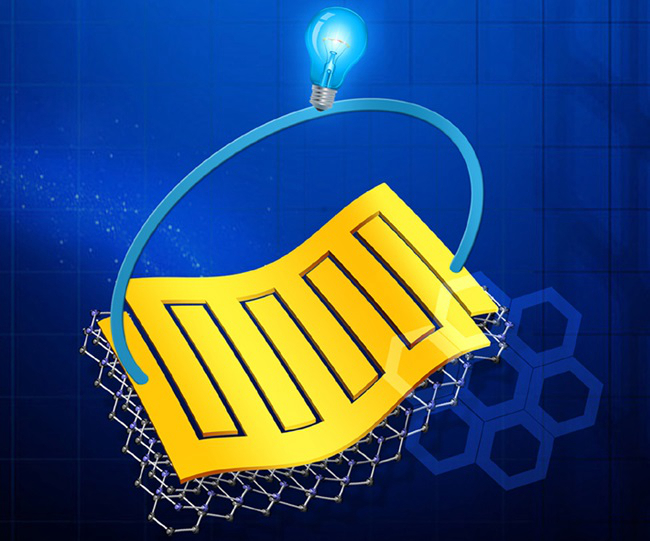With the dramatic developments of portable and wearable electronics, future energy storage devices become not only thin, light, and cheap, and but also ultraflexible. Micro-supercapacitors exhibit short ion diffusion distance, high power density, superior cycling lifetime, robust mechanical flexibility and safety. They are considered as one competitive alternative to high power sources for full integration into the manufacturing process of electronics.
Two-dimensional (2D) materials, such as graphene and analogous nanosheets (e.g. metal oxides) are becoming a groundbreaking material platform for constructing new flexible planar micro-supercapacitors. They own large surface areas, high mechanical flexibility, ultra-thinness, good electrical conductivity, and high theoretical capacitance (e.g., ~550 F g-1 for graphene). Importantly, planar micro-supercapacitors using graphene and 2D materials can fully utilize the planar device geometry and advantageous features of 2D nanosheets for on-chip energy storage. Moreover, such planar micro-supercapacitors that render electrolyte ions the ability to rapidly interact with all graphene layers in the horizontal direction are superior to conventional sandwich-like stacked devices.
The scientists WU Zhongshuai and BAO Xinhe et al from Dalian Institute of Chemical Physics reported the successful fabrication of stacked-layer heterostructure films (denoted as TP/EG). This film was prepared from thiophene (TP) nanosheets and electrochemically exfoliated graphene (EG) for high-rate and flexible micro-supercapacitors (TP/EG-MSCs) with superior rate capability and enhanced volumetric capacitance. This work has been published online in high-profile Advanced Materials.

Stacked-layer heterostructure films from thiophene nanosheets and electrochemically exfoliated graphene for high-rate and flexible micro-supercapacitors (Imaged by ZHAO Xuejun)
The 2D heterostructure films are produced by alternating deposition of electrochemically EG nanosheets and redox-active conducting TP nanosheets (thickness of 3.5 nm) in sequence, and exhibit large-area uniformity. Notably, the produced films were directly served as binder- and additive-free electrodes for flexible supercapacitors. Remarkably, the resulting microdevice exhibited a pronounced pseudocapacitance contribution with an enhanced volumetric capacitance of more than ~300 F cm-3. Meanwhile, the TP/EG-MSCs can be operated at high rate of up to 1000 V s-1, offering ultrahigh rate capability, as well as unprecedented flexibility under different bending states. This new stacked-layer heterostructures films has an integrated synergetic effect of ultrathin pseudocapacitive TP nanosheets and capacitive EG nanosheets. It can guarantee fast ion diffusion and electron transport throughout the binder-free compact film electrode. It is believed that this strategy of assembling stacked-layer heterostructure films will open up novel possibility for realizing 2D graphene and analogous redox nanosheets for new-concept thin-film energy storage devices. It will hold great promise for powering the integrated circuits.(Text and Imaged by ZHAO Xuejun)
Funder: Ministry of Science and Technology of China, National Natural Science Foundation of China, Natural Science Foundation of Liaoning Province, DICP, ERC Grant on 2DMATER and EC under Graphene Flagship.
Dr. LU Xinyi
Dalian Institute of Chemical Physics, Chinese Academy of Sciences,
457 Zhongshan Road, Dalian, 116023, China,
Tel: 86-411-84379201,
E-mail: luxinyi@dicp.ac.cn